Cool Jobs: The art of paper folding is inspiring science
Researchers use various types of origami to tackle a host of problems
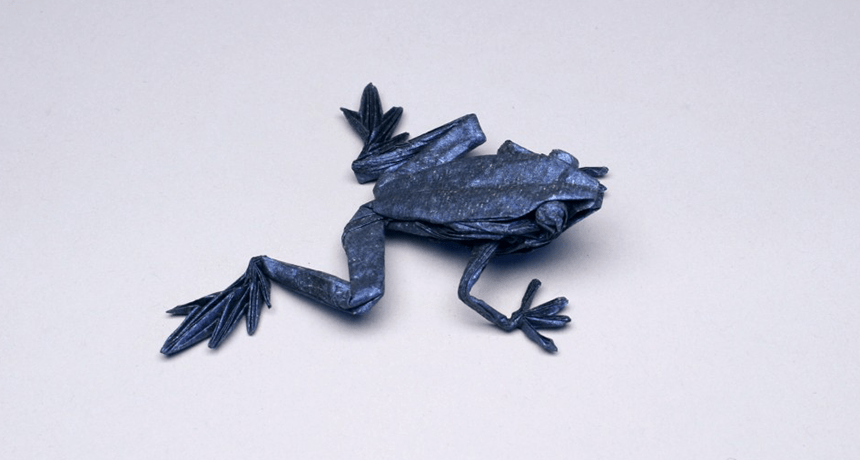
Robert Lang folded this 2011 sculpture — Poison Dart Frog HP, Opus 598 —from a single sheet of paper. Artists have worked with this type of paper-folding, known as origami, for centuries. Recently, some scientists have found use for this technique in their research.
Artist Robert J. Lang
Share this:
- Share via email (Opens in new window) Email
- Click to share on Facebook (Opens in new window) Facebook
- Click to share on X (Opens in new window) X
- Click to share on Pinterest (Opens in new window) Pinterest
- Click to share on Reddit (Opens in new window) Reddit
- Share to Google Classroom (Opens in new window) Google Classroom
- Click to print (Opens in new window) Print
Tornados, earthquakes and explosions often trap dazed and injured people beneath fallen buildings and other debris. Rescuers may have trouble sorting through that rubble to safely locate survivors. Invariably, there will be at least some small spaces within that debris. They may be too tiny for humans to fit through. But they’re not too small for some robots.
Such rescue automatons must be very tiny. It would help if they could squeeze and bend, too, to squish through small cracks and crevices. Indeed, such robots might take a lesson or two from critters in the living world — such as cockroaches.
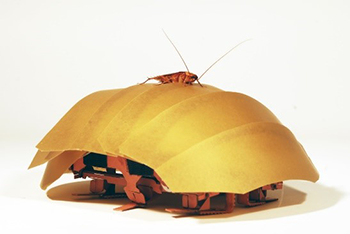
A few years ago, two researchers actually developed a robo-roach. They named it CRAM. Its name suggests how the robot can move through tiny spaces. And it’s also an acronym. It stands for “compressible robot with articulated mechanisms,” meaning it has bendable joints.
Kaushik Jayaram was a co-creator of the robot while a graduate student at the University of California, Berkeley. It certainly helped that this biologist had a background in robotics. Today, he works in Cambridge, Mass., at Harvard University’s Wyss Institute for Biologically Inspired Engineering.
Clearly, the insect world inspired his design. But so did origami (Or-ih-GAH-mee), the Japanese art of paper folding. And math.
In the design of something like robo-roach (or other critter-inspired robots), researchers “use a lot of math,” Jayaram says. “We combine physics and math to figure out what the robots need to do.”
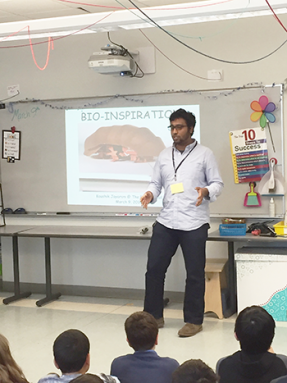
Gravity, friction and other forces slow or limit the movement of robots. The computer-controlled devices must use energy to overcome such forces. Jayaram uses one type of math (algebra) to compute the force that will act on his robots — and, therefore, how much energy those robots will need to carry out their tasks.
For CRAM, Jayaram used a second type of calculations — geometry, the math of shapes — to figure out the range of motion that each of his robot’s joints will need. That has allowed him to help the robot perform a gymnastic feat known as sprawling.
“We can kind of make the robot do a split,” he says. Doing splits helps these mini-robots navigate through tiny spaces, he explains.
Jayaram is just one of many researchers who are combining math and origami techniques to create clever, new products.
Watch a video about the CRAM cockroach robot.
The rules of origami
When they hear the word “origami,” most people envision designs made from a single square of paper. Maybe it’s a simple box, a paper crane or an elaborate dragon. Cutting is usually not allowed. So unfolding one of these designs returns the creation to the original square of paper.
But some types of origami may break one or both of the rules of folding uncut, single sheets of paper.
Origami artist Robert Lang started folding when he was six years old. At first, he copied patterns he found in books. By age 10, he was creating unique designs.
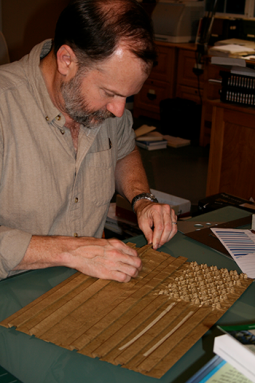
But this art wasn’t Lang’s first career. He trained as a physicist and engineer. Eventually, he got a job researching lasers at NASA’s Jet Propulsion Laboratory in Pasadena, Calif.
His career began to morph after he decided to write a book on paper folding. It provided the motivation for Lang to quit his job. He thought he might return to work when the book was done. But “working in origami was really fun,” he realized. And being self-employed allowed him to aid other scientists with their origami research. In the end, he says, “I sort of just never went back.”
Today, Lang helps design everything from solar arrays for outer space to medical implants. And origami-inspired folding serves as the basis for these.
There are different approaches to origami. Take the modular type. Here, artists use multiple sheets of paper to create complex designs. Each individual sheet is folded into a module, or unit. These units are then folded together to create one larger design.
In another type, artists combine cutting and folding to create their designs. This variation is known as “kirigami.”
“Most people consider origami and kirigami to be distinct,” Lang notes. “Origami is mostly folding, with at most a few cuts, but no paper is cut away. Kirigami uses a lot of cuts. And sometimes paper is actually cut away.”
Some people say origami artists don’t use glue. But this is a myth, Lang notes.
Especially for work that may be exhibited, he observes, “quite a few artists (including the great master [Akira] Yoshizawa) use glue to stiffen the paper or hold parts together.”
Beyond paper
Origami comes from two Japanese words — oru and kami. Together, they translate to “paper folding.” Yet not all origami involves paper.
For instance, Paul Rothemund is credited with inventing a research field known as DNA origami. On his webpage, he apologizes for use of that phrase. “‘DNA origami’ had the feeling of ‘DNA folding,’” he notes. He admits, however, that the term “is an abuse of the word.” After all, no paper is involved.
Lang has a different view. “The art form called origami has many definitions,” he says. “The one I prefer is: ‘A form of sculpture in which folding is the primary means of creating the form.’” Here, he argues, origami does not have to be limited to paper. It might involve folding DNA, metals — even plant leaves.
Origami has even inspired scientists to tackle a vast variety of projects, from creating shape-shifting pasta to improving noise barriers for roads.
These and other origami-inspired scientific innovations are powerful because they pack a triple punch. They combine the power of science, art and math.
Lang has experienced this relationship firsthand throughout more than 40 years of folding. He’s combined his artistic and math skills to create more than 700 original designs — everything from woodland animals to three-dimensional multi-pointed stars. Today, he is a leading origami master known for fashioning very complex folds.
Blueprints that focus on geometry
Most times, Lang doesn’t start his origami projects with the folding.
He approaches each new design as a creative problem. Effective problem-solving usually starts with a plan. That’s true for everything from writing an essay to building a house.
Crease patterns are the blueprints of origami, and Lang usually creates one of these before he’s ready to make his first fold.
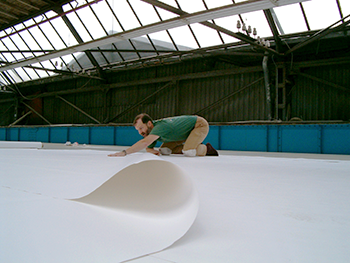
Before folding a three-dimensional insect, frog or dancer, for instance, he often begins by creating a mental map of what he wants to “sculpt.”
That’s where geometry comes in.
In his mind, he breaks down his idea for the finished art piece into the many shapes that will make it up. A butterfly, for instance, might be broken down into its wings, antennae and more. He then thinks about what shape might best represent each body part.
A transformation now takes place.
Instead of a body and legs, the proposed artwork becomes “a collection of shapes,” Lang explains. When it’s time to draw this collection of shapes on paper, he uses a technique called polygon packing. Polygons are two-dimensional shapes that have three or more straight sides. Packing, here, refers to finding the best way to arrange all of these many shapes onto a single sheet of paper.
The process isn’t always obvious.
For very complex animals, such as an armadillo, “I can’t really hold it all in my head,” Lang notes. So he starts with just a few parts. He determines what shapes he’ll use to represent those. He then draws that small collection of parts. Once he’s done, he moves on to creating a mental map for the rest of the armadillo’s body. He then adds crease lines to each shape. Only now is he ready to start folding.
Then comes the math
Lang also folds complex, abstract objects, including tessellations (Tess-eh-LAY-shuns). These are groups of shapes that fit closely together. There aren’t any gaps between them. And they don’t overlap. The shapes that make up tessellations are often polygons.
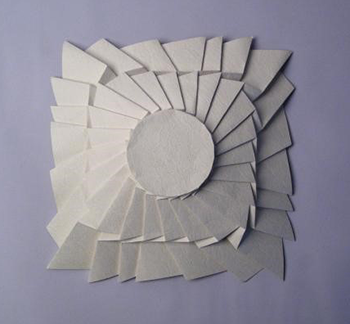
To make crease patterns for these objects, Lang often works with a computer program (called Mathematica). Using that program, he writes computer code to describe each shape that will make up the object he wishes to fold.
Much of the code he writes relies on formulas from geometry, trigonometry and linear algebra, he notes. Trigonometry is the math of triangles. It focuses on relationships between the three sides of these shapes, as well as the three angles found within these shapes. Algebra is a type of math that uses symbols called variables — such as x’s and y’s. The equation 5 + x = 7 is an example. (To find the answer, just subtract 5 from both sides. Then you have x = 2.) Linear algebra is an advanced field of math that is typically studied in college. It focuses on equations that have two variables in them, such as an x and a y. When plotted on a graph, these equations form a straight line.
Once Lang has written his code, the computer solves any math problems in it. The computer program then generates a crease pattern for the object he’ll fold.
As a kid, Lang liked math. “I thought math might have even been my primary career,” he notes. As he explored his interests in college, he decided to study electrical engineering and applied physics. He was drawn to these fields because they combine math and “the joy of making things.”
However, he notes, even folks who find math challenging or frustrating can become origami-inspired scientists.
Conquering fractions
Today Brandi Shaw is a chemical engineer. But the path she took to this math-centric job was far from a straight one.
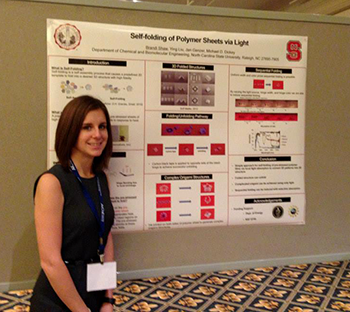
She recalls struggling horribly in middle school with math — especially with fractions. Yet they were far from her only challenge. “I actually failed seventh grade. Flat out failed it,” she recalls. “No summer school – repeated the whole thing,” she explains.
At the time, she notes, “I had a difficult home life . . . and I completely lost interest in school. I didn’t do my work. And I suffered the consequences.”
Eventually, she returned to school, determined to succeed. In the years following that wake-up call, she focused on her studies. She went on to place in the top 10 of her high-school graduating class.
She used her experience hurdling obstacles to fuel her path toward a college degree. She studied at North Carolina State University in what she describes as “one of the best chemical-engineering programs in the country.”
Michael Dickey was one of her first instructors in the field. During class, he discussed research opportunities for college students. Shaw itched for a taste of doing research, so she “got up the guts” to ask Dickey how she could get involved.
“It took a lot of courage,” she says. But asking paid off. Shaw became part of a team that used origami-inspired techniques to create sheets made of some plastic or other polymer. The idea is to make something that will self-fold in a controlled, multi-step process to form a desired shape.
Designs are first printed on the polymer with several colors of ink. These printed lines form printed hinges — the equivalent to crease lines on paper. Each ink responds to a different color of light. The researchers described their approach, last year, in a paper in Science Advances.
An ink that is cyan (SY-an) — or green-blue — absorbs about 80 percent of red light at a wavelength of 660 nanometers (nm). Yellow ink absorbs almost no red light. The result is that cyan hinges fold in response to red light, while yellow hinges are unaffected. The reverse happens when 470 nm blue light shines onto the polymer.
By exposing the polymer sheets to different colors of light at different times, the team controls when each fold takes place. As the polymer absorbs a color of light at one of the hinges, that section of the polymer heats up. The result? That part of the polymer contracts and folds inward. How much it folds depends on the width of the hinge printed onto the polymer.
The team learned how to control the final folded shape of each polymer sheet. In this way, they created everything from nested boxes to 3-D flowers. There are other approaches for folding these sheets into different shapes. But they don’t give researchers much control over the timing of the folds, the team noted in its 2017 paper.
That control is a valuable part of their process, because this folding with lights isn’t just for fun. One day, it might be used to create medical devices. Or it could make products that can be shipped more easily. Flattened products could be sent to customers. Then light could be used to assemble them into their final form. Products built this way also might be easily unfolded in one place and then reassembled elsewhere.
But many of these applications won’t be successful if researchers can’t control the order in which parts assemble.
Shaw graduated from college in 2014. She has a reassuring message for anyone who wants to become a scientist but has been told science might not be for them. “If you’re interested in it, it’s for you,” she says.
Story continues below video.
Origami inspires bone repairs
Like Shaw, Gulden Camci-Unal is a chemical engineer. She works at the University of Massachusetts in Lowell. But unlike Shaw, her work doesn’t focus on light. Camci-Unal develops biomaterials. Someday, the ones she creates may be used to repair or even regenerate bone, heart muscle, blood vessels, skin and more.
For her bone research, she grows cells called osteoblasts on origami-folded paper. As they grow, these bone cells deposit minerals onto the paper.
She hopes to use these paper-cell combinations as implants. Her research has already shown that the implants aren’t likely to be rejected by the body’s immune system. Still, more work needs to be done before they are ready to help patients.
Recently, Camci-Unal has focused on making the paper part of the implant stronger. And she has investigated different ways that the paper might be broken down in the body once the bone part of the implant is in place.
In the future, such implants might be used to help people who have injuries. Lab-grown parts could repair or replace damaged bones. They might also help people whose bones didn’t grow properly. “This approach can be useful for patients with bone defects of irregular sizes and shapes,” explains Camci-Unal.
She uses math to evaluate certain properties of her materials. For instance, she might calculate how strong these lab-grown bones are. And she might calculate how quickly they break down.
“As a child, I loved math,” Camci-Unal recalls. “I was good at it, I thought it was easy to learn and it was fun.” She also enjoyed folding origami creations and marveled “at the fact that paper, a very simple material, can make such versatile and intricate structures.”
“For as long as I can remember, I always wanted to be in engineering and medicine fields,” she says. “I was so intrigued about different ways that engineers and doctors impact everyday life.”
From Jayaram’s robo-roaches to Camci-Unal’s paper-and-bone combinations, origami-inspired research is driving thrilling innovations.
For anyone who is interested in pursuing a career in one of these exciting fields, Camci-Unal recommends that they “stay curious and explore different subjects.” She advises people to take different types of classes and to “figure out what their passion is.” Then they should use every chance, she says, to expose themselves to different aspects of careers in STEAM — science, technology, engineering, art and mathematics.







